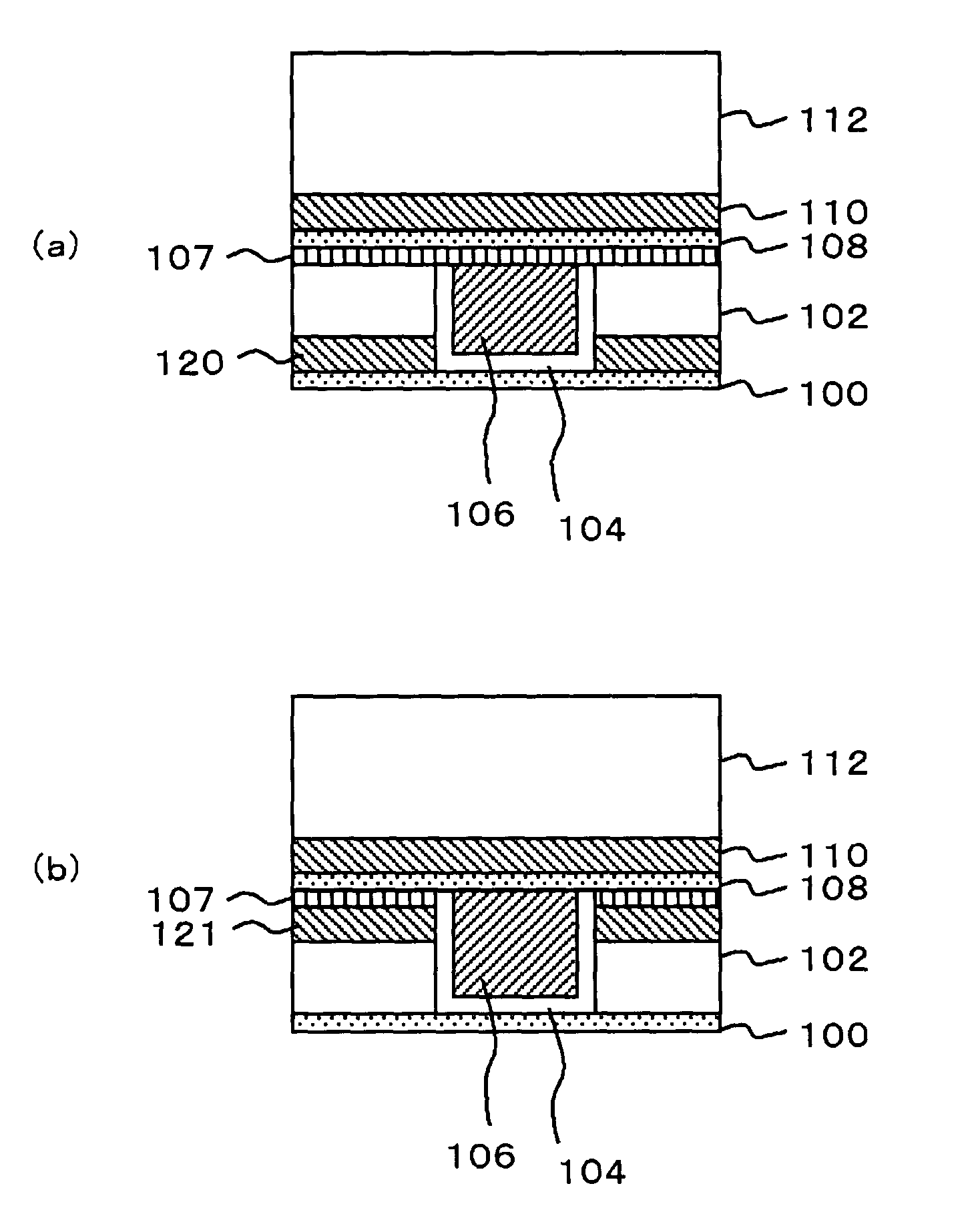Semiconductor device and manufacturing method thereof
a technology of semiconductor devices and manufacturing methods, applied in semiconductor devices, semiconductor/solid-state device details, electrical apparatus, etc., can solve problems such as insufficient adhesion, insufficient affinitive, and inability to meet the requirements of affinitiveness
- Summary
- Abstract
- Description
- Claims
- Application Information
AI Technical Summary
Benefits of technology
Problems solved by technology
Method used
Image
Examples
Embodiment Construction
[0080] Adhesion between the MSQ layer and insulating layers adjacent the MSQ layer has been evaluated through a four-point bending test. FIG. 11A shows an illustration of how the sample to be tested was placed during the four-point bending test executed in the example. A sample was placed on a retainer having four supporting points. FIG. 11B is a schematic cross-sectional view of the sample. An MSQ layer 222, a silicon oxide layer 223, an epoxy layer 224 and a silicon layer 225 were laminated in this sequence on a substrate 221. A notch was introduced in a central portion of the silicon layer 225. When a load was imposed on the sample, a crack originating from the notch to a point on the substrate 221, from which point the crack further runs horizontally along an interface of the MSQ layer 222 and the substrate 221. Then, adhesion between the substrate 221 and the MSQ layer 222 was evaluated based on the load applied at this moment.
[0081] The substrate 221 was constructed such that ...
PUM
 Login to View More
Login to View More Abstract
Description
Claims
Application Information
 Login to View More
Login to View More - R&D
- Intellectual Property
- Life Sciences
- Materials
- Tech Scout
- Unparalleled Data Quality
- Higher Quality Content
- 60% Fewer Hallucinations
Browse by: Latest US Patents, China's latest patents, Technical Efficacy Thesaurus, Application Domain, Technology Topic, Popular Technical Reports.
© 2025 PatSnap. All rights reserved.Legal|Privacy policy|Modern Slavery Act Transparency Statement|Sitemap|About US| Contact US: help@patsnap.com



